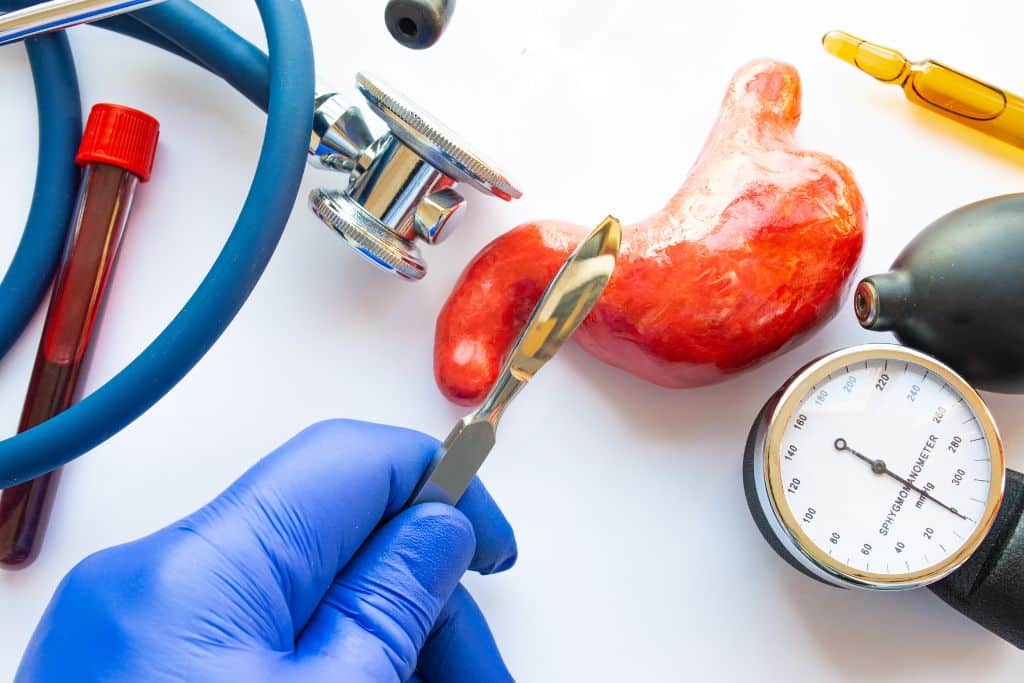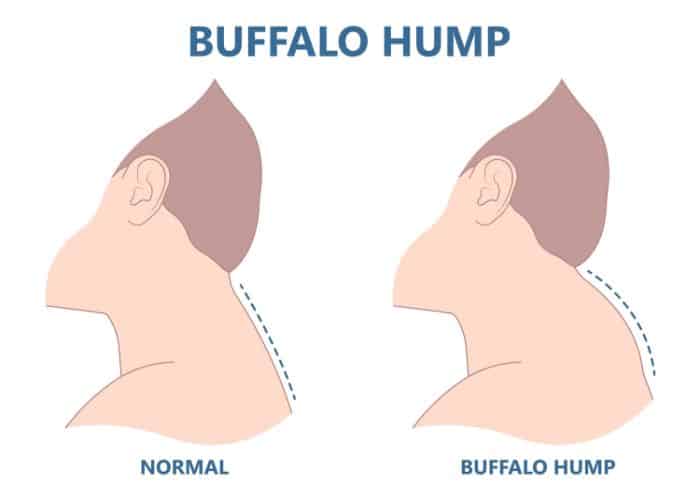Cryotherapy is a popular treatment that involves exposing your body to very cold temperatures for a short period of time. Many people turn to cryotherapy as a way to lose weight, but how often should you do it for the best results? While cryotherapy can provide a range of potential benefits, including weight loss, it's important to understand how often you should do it to achieve the desired results.
According to experts, the frequency of cryotherapy sessions can vary depending on your health and wellness goals. For general wellness, it is recommended to do 3-5 treatment sessions per week for the first month, then choose the schedule best matched to your goals. However, for weight loss and metabolic boost, it is recommended to do 3-5 sessions per week for at least two weeks, combined with exercise and healthy eating for maximum effect. It's important to note that while cryotherapy can be an effective tool for weight loss, it should not be relied on as the sole method for achieving your weight loss goals.
Contents
Understanding Cryotherapy
Cryotherapy is a treatment that involves exposing the body to extreme cold temperatures for a short period of time, usually between two to four minutes. The treatment is usually administered in a cryotherapy chamber, where the temperature can be as low as minus 200 to minus 300 degrees Fahrenheit. The treatment is believed to offer numerous health benefits, including weight loss.
During cryotherapy, the body is exposed to cold temperatures, which triggers a range of physiological responses. These responses include vasoconstriction, which causes the blood vessels to narrow, and a decrease in inflammation, which can help to reduce pain and swelling.
Cryotherapy is also believed to stimulate the production of endorphins, which are natural painkillers produced by the body. Endorphins can help to improve mood and reduce feelings of anxiety and depression.
While cryotherapy is often touted as a weight loss treatment, there is limited scientific evidence to support this claim. Some studies have suggested that cryotherapy may increase metabolism and help the body to burn more calories, but more research is needed to confirm these findings.
Overall, cryotherapy is a safe and non-invasive treatment that can offer a range of health benefits. If you are interested in trying cryotherapy for weight loss or other health concerns, it is important to speak with a qualified healthcare professional to determine if it is right for you.
The Science Behind Cryotherapy and Weight Loss

Cryotherapy is a popular treatment that involves exposing the body to extremely cold temperatures for a short period of time. The idea behind cryotherapy for weight loss is that the cold temperatures can boost the body's metabolism, leading to increased calorie burning and weight loss. While there is some evidence to support this idea, the science behind cryotherapy and weight loss is still being explored.
One way that cryotherapy may help with weight loss is by activating brown adipose tissue (BAT). BAT is a type of fat that is found in small amounts in the body and is responsible for generating heat. When the body is exposed to cold temperatures, BAT is activated and begins to burn calories to generate heat. This process is known as thermogenesis and can lead to increased calorie burning and weight loss.
Another way that cryotherapy may help with weight loss is by reducing inflammation in the body. Chronic inflammation has been linked to obesity and other health problems, and cryotherapy has been shown to reduce inflammation in some studies. By reducing inflammation, cryotherapy may help to improve insulin sensitivity and other metabolic functions, leading to weight loss.
While cryotherapy may have some potential benefits for weight loss, it is important to note that it is not a magic solution. To achieve lasting weight loss, it is important to combine cryotherapy with a healthy diet and regular exercise. Additionally, cryotherapy may not be appropriate for everyone, particularly those with certain medical conditions. It is always important to talk to a healthcare provider before starting any new treatment or weight loss program.
Overall, the science behind cryotherapy and weight loss is still evolving. While there is some evidence to suggest that cryotherapy may have benefits for weight loss, more research is needed to fully understand how it works and who may benefit most from this treatment.
How Often Should I Do Cryotherapy for Weight Loss
Cryotherapy is a popular weight loss method that involves exposing the body to extremely cold temperatures for a short period of time. But how often should you do cryotherapy for weight loss? The answer depends on your individual goals and needs.
According to health experts, if you are looking for general wellness benefits, you can start with 3-5 treatment sessions per week for the first month. After that, you can choose the schedule that best matches your goals. For weight loss and metabolic boost, you can do 3-5 sessions per week for at least two weeks. However, it should be combined with exercise and healthy eating for maximum effect.
It's important to note that cryotherapy is not a magic solution for weight loss. It can be a helpful tool when used in conjunction with other healthy habits, such as regular exercise and a balanced diet. Additionally, cryotherapy is not recommended for everyone, including pregnant women, people with certain medical conditions, and those with a history of frostbite.
In summary, how often you should do cryotherapy for weight loss depends on your individual goals and needs. Starting with 3-5 sessions per week for the first month can be beneficial for general wellness, while 3-5 sessions per week for at least two weeks can be helpful for weight loss and metabolic boost. However, it's important to combine cryotherapy with other healthy habits and consult with a healthcare professional before starting any new weight loss regimen.
Factors to Consider When Determining Frequency
When it comes to cryotherapy for weight loss, there are several factors to consider when determining frequency. Here are some important ones to keep in mind:
1. Goals
The frequency of cryotherapy sessions for weight loss will depend on your goals. If you are looking to lose weight, you may need more frequent sessions than someone who is just looking for general wellness benefits.
2. Health Conditions
Your current health conditions will also play a role in how often you should do cryotherapy. If you have any underlying health conditions, it's important to consult with your doctor before starting any new treatment, including cryotherapy.
3. Budget
Cryotherapy can be expensive, so your budget may also be a factor in determining how often you can afford to do it. If you are on a tight budget, you may need to space out your sessions more than someone who has more disposable income.
4. Lifestyle

Your lifestyle will also impact how often you can do cryotherapy. If you have a busy schedule, it may be difficult to fit multiple sessions into your week. On the other hand, if you have a more flexible schedule, you may be able to do more frequent sessions.
5. Results
Finally, the results you are seeing from cryotherapy will also impact how often you should do it. If you are seeing positive results, you may want to continue with more frequent sessions. If you are not seeing the results you want, you may need to adjust your frequency or consider other weight loss methods.
Overall, determining the frequency of cryotherapy sessions for weight loss will depend on a variety of factors. It's important to consult with a healthcare professional and consider your goals, health conditions, budget, lifestyle, and results when making this decision.
Potential Risks and Side Effects of Cryotherapy
While cryotherapy is generally considered safe, there are potential risks and side effects associated with the treatment. It is important to understand these risks before deciding to undergo cryotherapy.
One of the most common side effects of cryotherapy is skin irritation or redness. This is typically a mild and temporary reaction, but in some cases, it can be more severe. Additionally, some people may experience numbness or tingling in the treated area.
Another potential risk of cryotherapy is tissue damage. If the skin is exposed to extreme cold for too long, it can cause tissue damage or even tissue death. This is more likely to occur if the cryotherapy session is too long or if the temperature is too low.
In rare cases, cryotherapy can also cause nerve damage. This can result in a loss of sensation or movement in the treated area. It is important to discuss any concerns about nerve damage with your healthcare provider before undergoing cryotherapy.
Finally, cryotherapy may not be suitable for everyone. People with certain medical conditions, such as Raynaud's disease or cold urticaria, may be at increased risk of complications from cryotherapy. Additionally, pregnant women and people with certain medical implants, such as pacemakers, should avoid cryotherapy.
In conclusion, while cryotherapy can be an effective treatment for weight loss, it is important to understand the potential risks and side effects before undergoing the treatment. Be sure to discuss any concerns with your healthcare provider before starting cryotherapy.
Benefits of Regular Cryotherapy Sessions
Regular cryotherapy sessions can have numerous benefits for overall health and wellness. Here are some of the main benefits you can expect from regular cryotherapy sessions:
Reduces Inflammation
Cryotherapy can help reduce inflammation throughout the body, which can lead to a variety of health benefits. Chronic inflammation is linked to many common diseases, including heart disease, diabetes, and cancer. By reducing inflammation, cryotherapy can help prevent these diseases and improve overall health.
Pain Relief
Cryotherapy can help relieve pain in muscles and joints, making it a popular choice for athletes and people with arthritis or other types of chronic pain. The cold temperatures can help numb the nerves and reduce pain, making it easier to move and perform daily activities.
Improved Recovery
Regular cryotherapy sessions can help speed up the recovery process after workouts or injuries. The cold temperatures can help reduce inflammation and promote faster healing of athletic injuries. This can help athletes get back to their training routine faster and prevent future injuries.
Boosts Metabolism
Cryotherapy can help boost metabolism, which can lead to weight loss and improved overall health. By exposing the body to extremely low temperatures, cryotherapy can increase the body's metabolic rate, making it easier to burn calories and lose weight.
Reduces Migraine Symptoms

Cryotherapy can also help reduce the symptoms of migraines by cooling and numbing nerves in the neck area. One study found that applying a neck wrap containing two frozen ice packs to the neck for 30 minutes can significantly reduce migraine pain.
Overall, regular cryotherapy sessions can have numerous benefits for overall health and wellness. By reducing inflammation, relieving pain, improving recovery, boosting metabolism, and reducing migraine symptoms, cryotherapy can help improve quality of life and prevent many common diseases.
Monitoring Your Progress
When it comes to weight loss, it's essential to monitor your progress to determine if the treatment is effective. Cryotherapy for weight loss is no exception.
One way to monitor your progress is by keeping track of your weight. However, weight loss is not the only indicator of progress. Other factors to consider include body measurements, changes in body composition, and overall well-being.
It's important to note that cryotherapy is not a magic solution for weight loss. It works best when combined with a healthy diet and regular exercise. Therefore, monitoring your progress should include tracking these other factors as well.
Some people may see results after just a few sessions, while others may take longer. It's essential to be patient and not expect immediate results. Consistency is key, so it's essential to stick to a regular schedule and not skip sessions.
If you're not seeing results after several sessions, it may be time to re-evaluate your diet and exercise routine. It's also a good idea to talk to your healthcare provider to ensure there are no underlying health issues that may be hindering your progress.
In summary, monitoring your progress is crucial when it comes to cryotherapy for weight loss. Keep track of your weight, body measurements, body composition, and overall well-being. Remember that cryotherapy is not a magic solution and works best when combined with a healthy diet and regular exercise. Be patient, consistent, and don't hesitate to talk to your healthcare provider if you're not seeing results.
Conclusion
In conclusion, cryotherapy is a popular weight loss method that has gained popularity in recent years. However, the question of how often one should do cryotherapy for weight loss is still a matter of debate among experts.
According to The CryoBar, it is recommended to get in a cryosauna two to three times per week for about three weeks when first beginning your cryotherapy journey. This is because it takes some time for the body to have its full metabolic and hormetic responses to the extreme cold. After this initial period, it is recommended to continue with one to two sessions per week for maintenance purposes.
It is important to note that cryotherapy is not a magic solution for weight loss. As HealthNews points out, while cryotherapy chambers can help you burn more calories and, thus, lose weight, it is not a substitute for a healthy diet and regular exercise.
Moreover, a study published in the journal Oxidative Medicine and Cellular Longevity found that six months of cryotherapy didn't result in any change in body mass or body fat even when combined with exercise and a low-calorie diet, according to Women's Health.
Therefore, it is important to approach cryotherapy as a complementary treatment to a healthy lifestyle, rather than a standalone solution for weight loss. As with any new health regimen, it is recommended to consult with a healthcare professional before starting cryotherapy.






